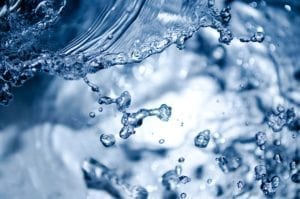
Hardness is a measure of the amount of certain naturally occurring minerals found in water, namely calcium and magnesium. While calcium and magnesium are essential minerals for human health, hardness may cause spotting on dishes and shower walls, affect the lathering of soap (more hardness = less lathering or suds) or cause deposits on water related fixtures. The District has implemented measures to reduce hardness levels, which in the past have been significantly higher than those shown below. The following list describes typical hardness levels for different zones throughout the district. Depending on the exact blend of water coming from different sources at any given moment, your water hardness levels may vary from those shown on the chart. These values are for general reference only.
NOTE: The hardness values determined in the lab are expressed in parts per million (ppm) as calcium carbonate (CaCO3). Many water softeners use grain per gallon (gpg) values for determining settings – please refer to your manual to see how settings are calculated. To convert ppm to grains per gallon, simply divide the ppm values shown on the chart by 17.1. Both units are given below.
- Spanish Wells / Jonesville
Moderately hard to hard water year-round (125 ppm, 7.5 gpg)
- Squire Pope / Gumtree
Soft water year-round (20ppm, 1 gpg)
- Windmill Harbor
Varies but mostly moderately hard (40-120ppm, 2.5-7.0 gpg)
- Hilton Head Plantation / Palmetto Hall
Most areas have little hardness (20-40 ppm, 1.0-2.5 gpg) except during mid-to-late summer when water can be moderately hard to hard (60-120 ppm, 3.5-7.0 gpg)
- Indigo Run
Varies between soft and moderately hard year-round (20-60 ppm, 1.0-4.0 gpg)
- Port Royal / Folly Field / Mathews Drive
Mostly soft water year-round (20 ppm, 1.0 gpg)


